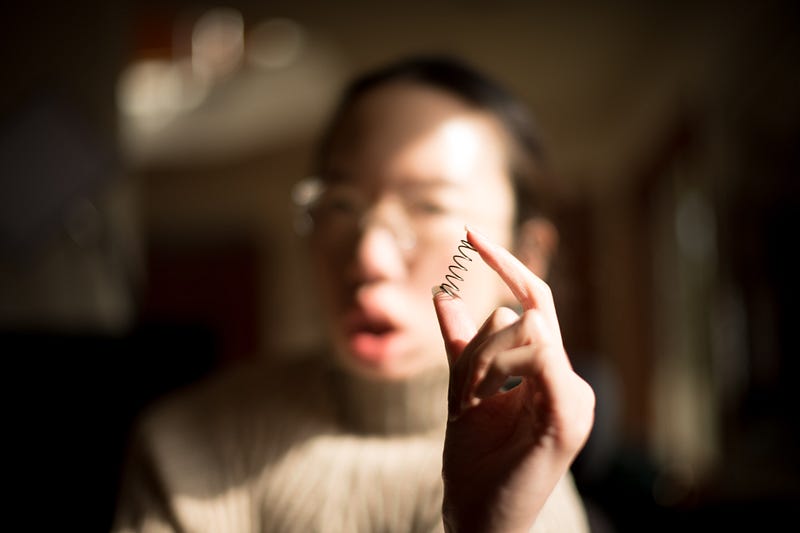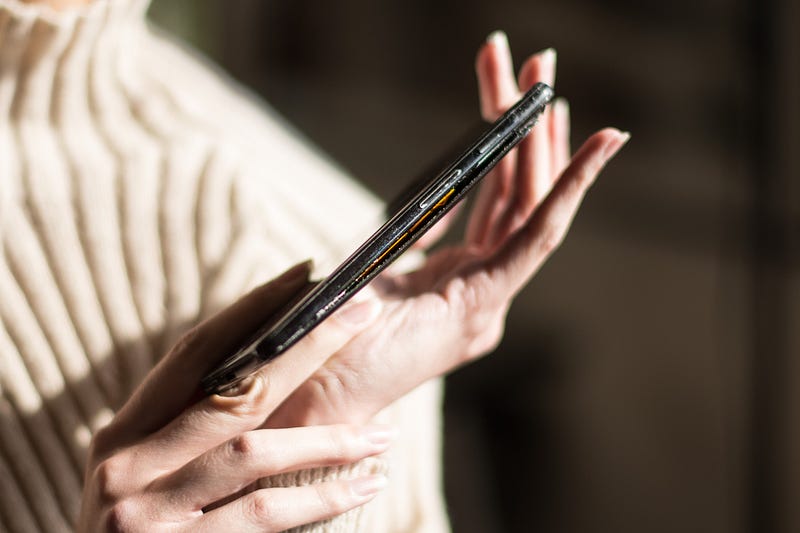Tech that could be enabling me is impairing me instead.
Note: The opinions in this article are solely those of its author.
In September, I was waiting to cross the Embarcadero in San Francisco. A woman standing nearby asked me, “Is that the wheelchair that can climb stairs?” I shook my head. (I hadn’t gotten this one before, so I didn’t have one of my joking comebacks ready.) She informed me, “The same company that makes that chair also makes ones that can climb stairs.”
Well. That would be impressive, considering the company that makes my chair cannot even keep the correct time on the joystick display.
Stair-climbing wheelchairs, exoskeletons, personal assistant robots, AI, CRISPR, and brain–machine interfaces are all called innovations instead of novelties. I call them shiny objects, and most of them will hurt me more in their mainstream mystique than they will ever help me.
I’m a cyborg and a futurist. I love innovation in theory, but, in practice, it sets me backwards when it means I can’t use what worked for me before.
My cyborg smorgasbord (my smorgasborg)
I use three power wheelchairs and five phones.
Each chair serves me in one of three environments: home, work, and going out. None can do every place well, and only one is still covered by insurance. And no, none of their manufacturers also makes a wheelchair that can climb stairs. They all cause me pain or pressure in different ways — which means switching between them relieves some pain in exchange for other pain.
I have five more mobility devices just in case. Three of them are Pride Revo scooters, which I loved but have been discontinued in favor of newer models. I use two of my Revos as spare part donors for the one that has broken down the least.
Wheelchair repairs are expensive and have months-long wait times, if I can get them at all. When the motors of my dear 15-year-old Quantum 600 started leaking oil onto my floors, I spent more than $1500 out-of-pocket to replace them both. One of these broke soon after, and fortunately, I had a friend knowledgeable and caring enough to repair it. He noted that the break was probably caused by improper installation.
For my going-out chair, I paid more than $4000 for a Quantum Edge 3 that can elevate. The resistance of its joystick was too high for me, so I needed a spring replaced with a thinner one. The process of replacing it required scheduling two in-person appointments, one of which was for a so-called evaluation that was nothing more than the technical representative showing up, confirming what I was asking for, and leaving five minutes later.
 A spring
about 5 cm long, with about 5 revolutions.
A spring
about 5 cm long, with about 5 revolutions.Springs like this one can be found online for less than a dollar. But the official spring part cost $40, and the entire process took five and a half months. And this was with the help of an excellent customer service representative; the process would have been even more frustrating without that person’s attentiveness.
My work chair is a Permobil F5. Over time, its button pad has broken off its mount. One might guess why, instead of undertaking another repair odyssey, I chose to fix it myself for the price of two hairbands.
As the rest of the micromobility industry charges forward, power wheelchairs get further and further behind. My Silicon Valley city has several places that sell and repair electric bikes, but it has no such place for power wheelchairs. When will my chairs have lithium-ion batteries instead of each being stuck with two heavy lead-acid car batteries? What are ebikes if not in-line power wheelchairs? My wheelchairs aren’t just medical devices; they’re echairs.
Micro-regressions
Just as each of my echairs can only do some of what I need, each of my five phones is limited. And the thing that none of them does quite well enough is the thing I need most in a phone: typing.
In the year 2023, when companies launch ever more advanced phones several times a year, I would like to be able to input text. Yet with ostensibly so many options, I still do not have a hardware and software combination that truly works for me. My favorite keyboard was one developed by TouchPal. I lost it six years ago when my HTC One M8 stopped working after an Android update. End-of-lifed but never forgotten.
Since then, the accessibility experience of my phones has only regressed. My next keyboard no longer had arrow keys. (Don’t ask a person with muscular dystrophy to edit text by reaching higher on the screen or wrestling with an erratic cursor.) The one after that no longer had accurate swipe-typing or useful word prediction.
My current best keyboard has been removed from the Play Store, so I only have it on my oldest phone. This is the state of that phone:
 The battery
is expanding so much that the phone is splitting apart.
The battery
is expanding so much that the phone is splitting apart.People tell me my phone is at risk of exploding. In the absence of a better keyboard, an explosion is the only thing that will make me stop using it.
Disability, technology, and autonomy
As a cyborg, I am not only my human body. My echairs are my means of self-locomotion — my keyboard features, my means of expression. I use my machines the way others use muscles. I don’t need autonomous technology. I need technology to make me autonomous.
I was born with muscles that die. I want technology to autonomize me and, as I lose muscles, to adapt to me. But the way technology is advancing today, it isn’t just leaving me behind. It’s setting me back.
When the dominant tech and corporate powers don’t help us, krips still find a way, and krips help each other. Liz Henry is starting a Disability Technology Foundation to open source information on assistive tech hacks. NMD United, whose board I’m honored to have joined, creates virtual spaces that people with neuromuscular disabilities use to troubleshoot their echairs. Abdullah’s design studio aims to show how technology should serve disabled artists in achieving the highest forms of human creativity. David Ortiz advocated from within the Colorado state government for the United States’ first right-to-repair law for echairs. And allies such as Dmitrii Votintcev and my kind Chorda team have been realizing my idea for a vertical hardware keyboard that I’d find a joy to use, much better than the one I’m using to write this article.
I wish I could take access for granted. I wish companies would realize that disabled people are the ones who need technology the most, when the entire point of technology is to expand what people can do. I wish I didn’t have to worry about fighting to keep old things just as much as fighting for better things. I wish I didn’t have to fight at all. And I wish I could easily input text.
My machines are part of how I exist, and therefore who I am. Obsolescence, whether planned or permitted, renders parts of me obsolete. End-of-lifed.
<EOF>
This piece is part of Immerse’s 2023 issue centering disability innovation in documentary and emerging tech — presenting perspectives from artists, activists, scholars and technologists at the vanguard of storytelling and disability justice. You can find other featured stories and more information about the issue here.
For more news, discourse, and resources on immersive and emerging forms of nonfiction media, sign up for our monthly newsletter.
Immerse is an initiative of the MIT Open DocLab and Dot Connector Studio, and receives funding from Just Films | Ford Foundation, the MacArthur Foundation, and the National Endowment for the Arts. The Gotham Film & Media Institute is our fiscal sponsor. Learn more here. We are committed to exploring and showcasing emerging nonfiction projects that push the boundaries of media and tackle issues of social justice — and rely on friends like you to sustain ourselves and grow. Join us by making a gift today.